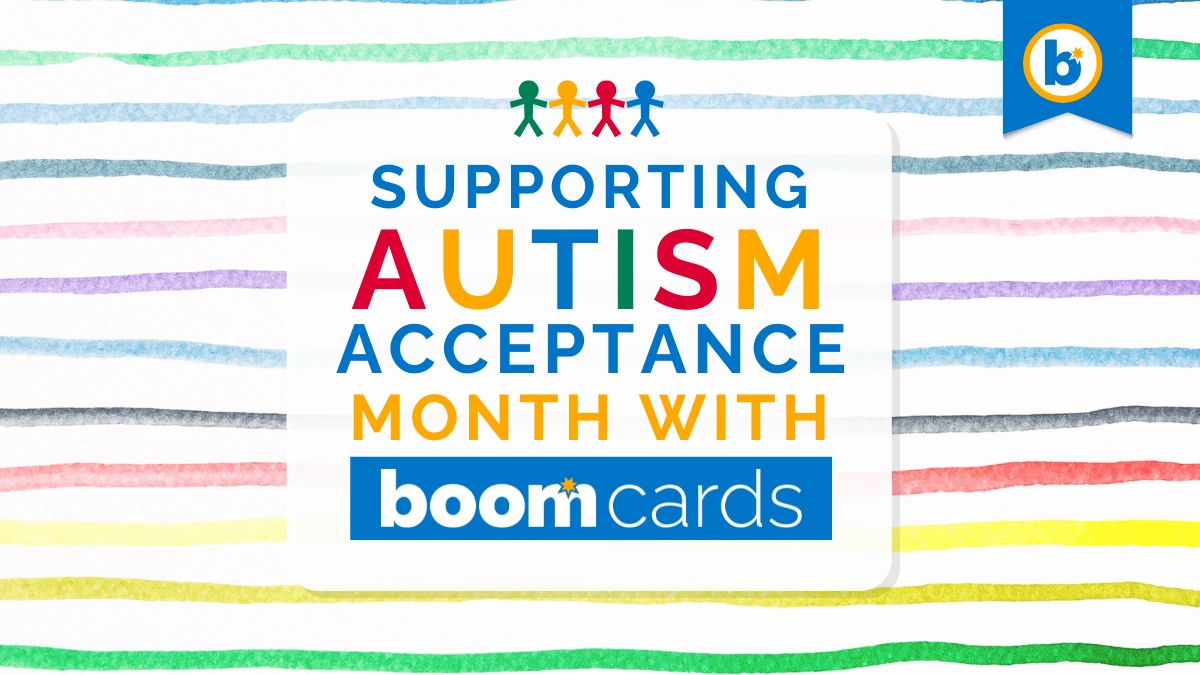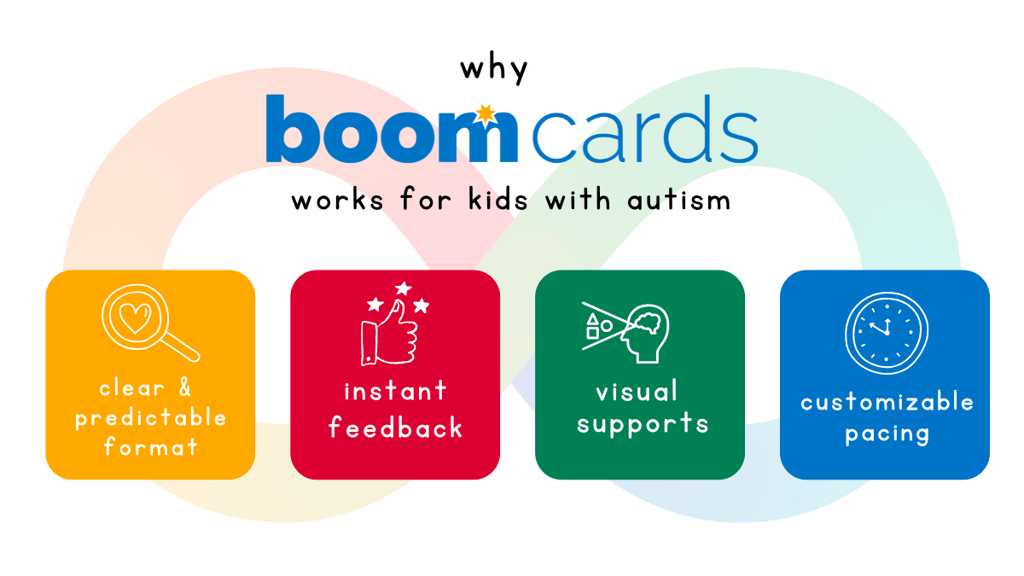
April is Autism Acceptance Month, and while awareness is important, what really matters is understanding and support. One of the best ways to support autistic individuals—whether as parents, teachers, or therapists—is by giving them the tools they need to succeed. That’s why Boom Cards work so well—they offer a flexible, interactive way to support learning and communication for kids with different needs.
Why Boom Cards Work for Kids with Autism
Because autism affects individuals so differently, no single approach to learning works for everyone. Some autistic kids are highly verbal, while others are non-speaking. Some love structure and repetition, while others crave variety. Boom Cards provide the flexibility to meet kids where they are.
- Clear, predictable format – Many autistic learners thrive on routine. Boom Cards follow a simple, consistent layout that reduces anxiety and helps kids feel in control.
- Instant feedback – Autistic kids often struggle with uncertainty. Boom Cards give immediate responses, so kids know right away if they got something right or need to try again.
- Visual supports – Many decks include pictures, symbols, or color coding, making concepts easier to process.
- Customizable pacing – Some kids work quickly, while others need extra processing time. With Boom Cards, there’s no pressure to keep up with a group.
For my kids, Boom Cards have helped in completely different ways. One uses them for early reading skills because he responds well to digital interaction. Another benefits from social-emotional decks that teach emotions and self-regulation strategies. My third? She loves the cause-and-effect decks where she can click and see something happen—it gives her a sense of control over her learning.

Supporting Different Learning and Communication Needs
One of the biggest challenges in supporting autistic individuals is finding ways to communicate and teach in ways that work for them. Boom Cards help bridge that gap in multiple ways:
- For non-speaking or minimally verbal kids – Many Boom Cards decks use visuals and symbols to help with communication and comprehension. PECS-style decks, first/then boards, and social stories can be game-changers.
- For kids with sensory sensitivities – Some autistic children struggle with paper-based tasks due to texture, sound, or fine motor challenges. Boom Cards eliminate that stress by providing a smooth, digital alternative.
- For those needing social-emotional support – There are Boom decks designed specifically to teach emotions, coping strategies, and appropriate social responses in a way that’s engaging and non-threatening.
Making Autism Acceptance Month About Action
Autism Acceptance Month isn’t just about wearing blue or sharing social media posts. It’s about actively supporting autistic individuals in ways that make a difference. Whether you’re a parent, teacher, therapist, or friend, you can help by:
- Providing learning tools that meet autistic kids’ needs.
- Creating environments that reduce stress and sensory overload.
- Encouraging communication in the way that works best for them, not just what’s easiest for us.
Autism is a spectrum, and in my house, we live across all of it. With three kids, all diagnosed with ASD but in completely different ways, I’ve learned that no two autistic individuals experience the world the same. Awareness is great, but understanding and support are what truly make a difference.
Explore Boom Cards for Autism Support
If you’re looking for a way to support autistic learners—whether in academics, communication, or social-emotional growth—Boom Cards are an amazing resource. They make learning more accessible, engaging, and adaptable for kids across the spectrum. Check out these Boom Cards for Autism Support to find decks designed specifically for autistic learners.
